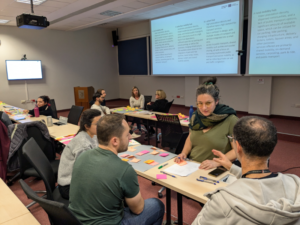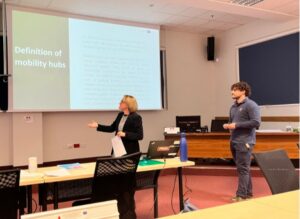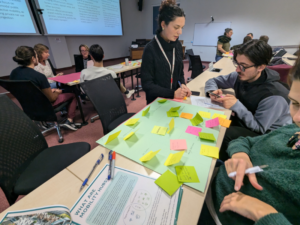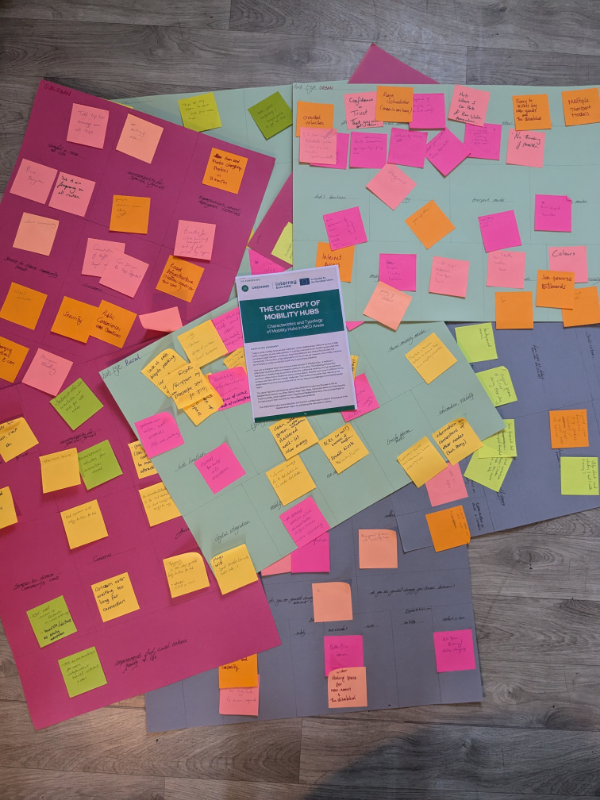The University of Malta has concluded the citizens’ engagement workshop, consulting a preparatory exercise in the bottom-up portion of WP2 in the frame of GREENMO project. The objective of this task was to gather citizens’ preliminary input on mobility hubs which will, then, feed the subsequent public questionnaire which will be distributed to a larger audience as the next step in the project implementation. The eventual survey will gather valuable insights into citizens’ perceptions and expectations of mobility hubs, ensuring their perspectives are integrated into the project’s framework.

The workshop was structured yet interactive. Participants were divided into small and diverse groups, tasked with co-designing use cases for urban, suburban, or rural mobility hubs. Table moderators guided discussions to identify current travel challenges and collaboratively ideate concerns as well as solutions that a mobility hub may offer. Participants shared the barriers they encounter in their current travel routines, including unreliable public transportation, limited last-mile connectivity, and a lack of infrastructure for active mobility like cycling and walking. Safety concerns, particularly for women and vulnerable groups, werehighlighted, as were affordability issues and insufficient options for shared mobility.
As a highlight from the Malta case, when envisioning an ideal mobility hub, the importance of strategic placement was emphasised, such as proximity to residential areas, workplaces, and key urban centres. Digital integration was another key expectation: real-time updates on transport schedules, availability, and routes through user-friendly apps to ensure seamless transfers between different modes of transport.

Furthermore, safety and cost were brought up by group participants who suggested that well-lit environments, camera monitoring, and visible security measures would help address safety fears, while affordability—through subsidised fares or bundled packages for frequent users—was proposed. Alongside mobility services, the inclusion of non-mobility features such as Wi-Fi, charging stations, food kiosks, and co-working spaces was seen as a way to enhance comfort, usability, and attractiveness.
 Taking the above into account, many participants expressed their willingness to change their travel behaviour if certain expectations were met, noting that mobility hubs could improve quality of life by reducing commuting stress, improving air quality, and creating stronger connections to social and economic opportunities. Importantly, there was a call for clarity on deployment timelines, with citizens expecting phased rollouts that prioritise urgent needs.
Taking the above into account, many participants expressed their willingness to change their travel behaviour if certain expectations were met, noting that mobility hubs could improve quality of life by reducing commuting stress, improving air quality, and creating stronger connections to social and economic opportunities. Importantly, there was a call for clarity on deployment timelines, with citizens expecting phased rollouts that prioritise urgent needs.
In parallel, in the frame of GREENMO, interviews with key stakeholders are still being carried out for the thematic analysis of the concept of mobility hubs. The synthetic combination of these the approaches of both citizens as derived by this local workshop, and of stakeholders per territory, is intended to contribute to a holistic and comprehensive understanding of perspectives from citizens as well as policymakers. This will ensure that the results of the GREENMO project are based on diverse and representative knowledge.


